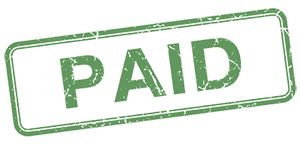|
||||||||||||

|
||||||||||||
The DOL's PAID Program |
||||||||||||
|
The U.S. Department of Labor's new Payroll Audit Independent Determination (PAID) Program encourages employers to self-audit their compensation practices for compliance with the Fair Labor Standards Act (FLSA). PAID is a voluntary, pilot program, available to almost all employers. Each employer will need to assess the potential benefits and drawbacks of participating in the program. The following discusses some of the key features of the program that employers may wish to consider in deciding if PAID is right for them. BACKGROUNDPotential FLSA violations are generally resolved in one of two ways, each costly and inefficient: 1) the DOL's Wage and Hour Division (WHD) may investigate the employer's pay practices and force remediation; or 2) employees may bring actions for unpaid wages, which frequently take the form of expansive class action lawsuits. Of course, employers that self-identify FLSA violations can voluntarily fix their pay practices. When an employer privately corrects a non-compliant wage payment practice, however, it cannot force employees to release the employer from claims for backpay or other damages. The FLSA forbids agreements between employers and employees that modify FLSA obligations unless the agreement is supervised by the DOL or a court. Accordingly, private resolution is not an effective way, or at least not a surefire way, to forestall litigation. PAID offers a carrot that addresses this problem. PAID enables employers to coordinate with the WHD in the resolution of self-identified FLSA violations and, if the WHD supervises the employer's self-correction, the employer will have an effective release against individual worker or class action FLSA claims. PAID PROCESSEmployers interested in PAID may register on the PAID website. The first step--after the employer has made the important initial decision whether to use the program in the first place--is to review 12 compliance references (FLSA summaries, videos, etc.) that the WHD has posted online. After reviewing these 12 items, a "certificate of completion" is automatically generated. According to DOL, the agency does not collect any information on who registers at that step, so signing in to review the compliance references does not have a downside. The next step is for the employer to self-audit FLSA compliance. The DOL has made clear that employers may retain counsel to assist in that review. Essentially, employers are to determine whether they have properly compensated employees during the past two years, including by properly paying them minimum wage, properly paying required overtime pay, properly classifying employees as exempt versus non-exempt, and properly classifying workers as employees versus independent contractors. For example, some employers may not be aware that paying certain types of bonuses to hourly workers effectively increases their "regular rate" of pay, which in turn affects the hourly overtime rate of pay, and that they therefore may have underpaid workers. If no violations are discovered, the employer obviously need not take further action under the PAID program. Otherwise, after calculating amounts due for FLSA violations, the next step in the program is for the employer to contact the local district office of the WHD. The district office will then direct the employer to submit relevant information, such as the names and addresses of employees who were underpaid, payroll records, and the employer's calculations for corrective payments. Note that these submissions will become subject to public disclosure under FOIA. Finally, after obtaining the WHD's concurrence on the remediation payments, the WHD will send the affected workers agreements to sign in exchange for receiving improperly withheld pay. POTENTIAL PITFALLSEmployers that identify and correct FLSA violations necessarily aim to foreclose future wage litigation. An objective of the PAID program is, of course, to facilitate voluntary FLSA compliance and remediation, rather than subject employers to more draconian investigations and litigation. However, PAID cannot guarantee final resolution of FLSA problems. Workers might not accept the employer's calculations on what backpay is owed, even if the WHD does, and those workers might refuse to sign the agreement proposed by the WHD. Moreover, having been alerted to apparent FLSA violations, those employees might file lawsuits in the hope of obtaining a greater recovery than the employer offered. Also, PAID participation does not prevent wage claims under state laws. While PAID has some benefits, employers have other ways to address potential FLSA non-compliance. Employers should consider these alternatives before making a determination to use the PAID program. Note: This alert should not be construed as legal advice and its receipt does not create an attorney-client relationship. |
The DOL's PAID Program allows employers to coordinate with the DOL in remedying self-identified violations of the FLSA's minimum wage and overtime pay requirements.
PAID is a nationwide program available to any employer covered by the FLSA. The DOL is not obligated, however, to accept all requests to participate in the program and reserves the right, for example, to decline participation of organizations that the DOL believes have acted in bad faith. Also, employers may not resolve FLSA claims via PAID if the WHD has already initiated an investigation or if the employer has been sued or has received a threat of suit under the FLSA.
According to its recently published Spring 2018 regulatory agenda, the DOL is working on a notice of proposed rulemaking to clarify how employers are to calculate a worker's "regular rate of pay." The proposed rule would amend the DOL's extensive regulations on this topic at 29 C.F.R. Part 778, although the DOL has not released details of the proposed changes. According to the regulatory agenda: "In this Notice of Proposed Rulemaking, the Department will propose to amend 29 CFR part 778, to clarify, update, and define regular rate requirements under section 7(e)(2) of the [Fair Labor Standards] Act."
DOL Issues Spring 2018 Regulatory Agenda (May 9, 2018)
Donn C. Meindertsma is a partner in the Washington, D.C. office of Conner & Winters. For more than 30 years, he has represented employers in the District of Columbia and elsewhere in defending against employment litigation and in providing counseling to clients on labor and employment law compliance and risk management. He is a member of the firm’s Labor and Employment Practice Group. He is a frequent speaker on employment law topics and the author of several articles and books, including the recently released book: Marijuana and the District of Columbia: A Comprehensive Guide for Employers.
|
|||||||||||
| Subscribe | Unsubscribe | ||||||||||||

